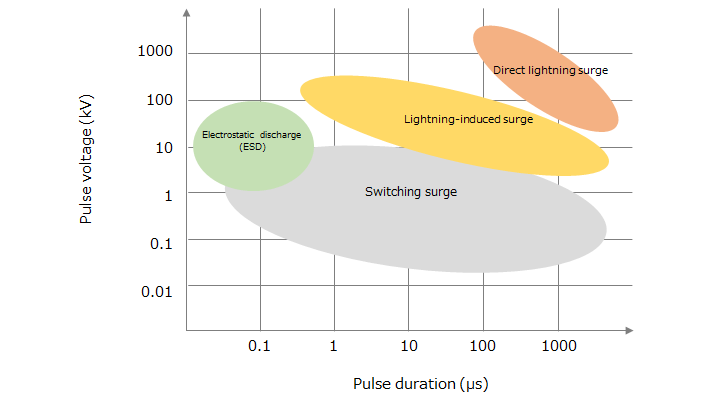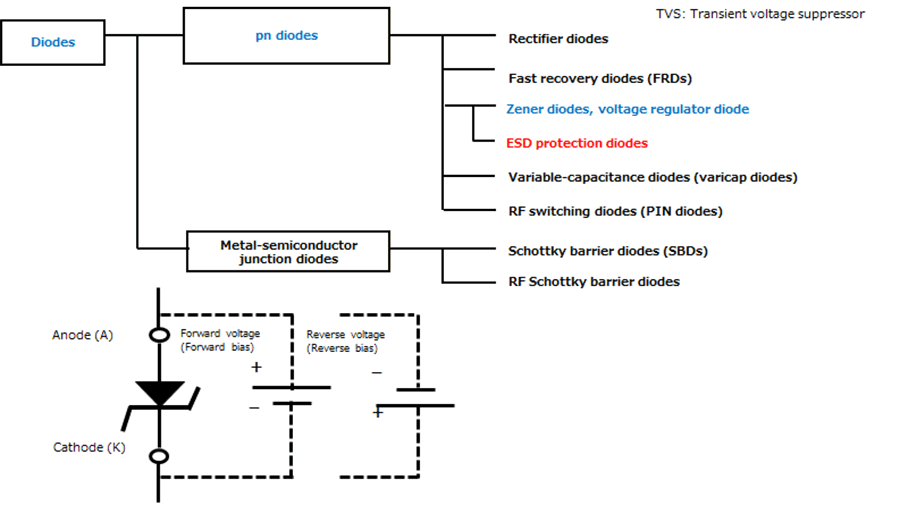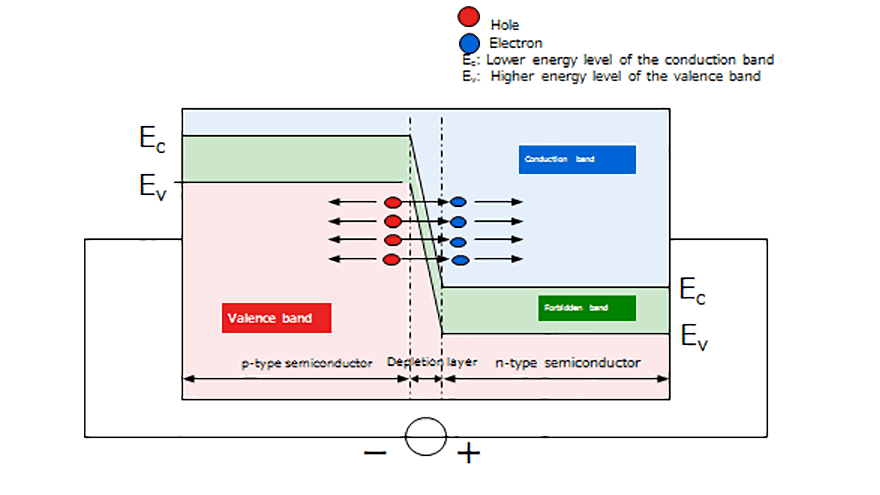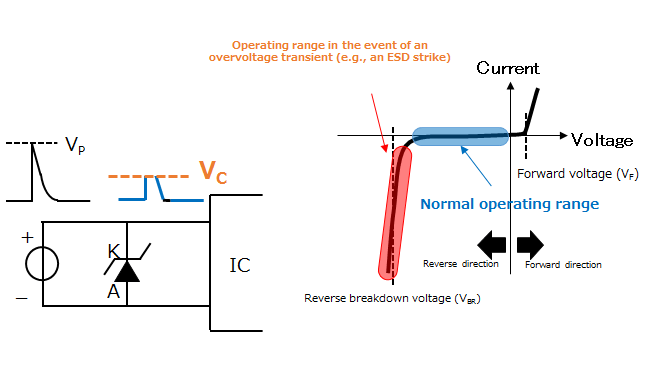- General Top
- SEMICONDUCTOR
- STORAGE
- COMPANY
-
My ToshibaSemicon
- Semiconductor Top
-
ApplicationsAutomotive
Body Electronics
xEV
In-Vehicle Infotainment
Advanced Driver-Assistance Systems (ADAS)
Chassis
IndustrialInfrastructure
BEMS/HEMS
Factory Automation
Commercial Equipment
Consumer/PersonalIoT Equipment
Healthcare
Wearable Device
Mobile
Computer Peripherals
-
ProductsAutomotive Devices
Discrete Semiconductor
Diodes
Transistors
Logic ICs
Analog Devices
Digital Devices
Wireless Devices
※
: Products list (parametric search)
Power SemiconductorsSiC Power Devices
※
: Products list (parametric search)
Isolators/Solid State RelaysPhotocouplers
Digital Isolators
Solid State Relays
Fiber Optic Transmitting Modules
※
: Products list (parametric search)
MOSFETsIGBTs/IEGTsBipolar Transistors※
: Products list (parametric search)
Diodes※
: Products list (parametric search)
MicrocontrollersMotor Driver ICsIntelligent Power ICs※
: Products list (parametric search)
Power Management ICsLinear ICs※
: Products list (parametric search)
General Purpose Logic ICsLinear Image SensorsOther Product ICsOther Product ICs
※
: Products list (parametric search)
-
Design & Development
-
Knowledge
- Where To Buy
- Part Number & Keyword Search
- Cross Reference Search
- Parametric Search
- Stock Check & Purchase
This webpage doesn't work with Internet Explorer. Please use the latest version of Google Chrome, Microsoft Edge, Mozilla Firefox or Safari.
require 3 characters or more. Search for multiple part numbers fromhere.
The information presented in this cross reference is based on TOSHIBA's selection criteria and should be treated as a suggestion only. Please carefully review the latest versions of all relevant information on the TOSHIBA products, including without limitation data sheets and validate all operating parameters of the TOSHIBA products to ensure that the suggested TOSHIBA products are truly compatible with your design and application.Please note that this cross reference is based on TOSHIBA's estimate of compatibility with other manufacturers' products, based on other manufacturers' published data, at the time the data was collected.TOSHIBA is not responsible for any incorrect or incomplete information. Information is subject to change at any time without notice.
require 3 characters or more.
1-3. Using different types of protection diodes (ESD protection diodes and Zener diodes for overvoltage protection)

The ESD protection diode is a type of Zener diode specifically designed to protect electronic circuits from overvoltage surge, particularly electrostatic discharge (ESD) events. ESD protection diodes provide protection mainly against short ESD pulses as well as lightning-induced and switching surge events that last for less than several microseconds. Zener diodes specifically designed for protection from surge events with a pulse duration larger than ESD are called surge protection Zener diodes. These Zener diodes are suitable for protecting electronic circuits from overvoltage pulses due to lightning-induced and switching surge events that last for more than several microseconds.
Type |
Description |
|---|---|
Electrostatic discharge (ESD) |
Electrostatic discharge (ESD) is a sudden flow of electricity between two electrically charged objects due to the discharging of stray capacitance that occurs when they are brought into contact or close together. Although ESD events can reach thousands of volts, their pulse duration is on the order of nanoseconds. Because of lower surge energy, ESD events are relatively easier to protect from than lightning-induced and switching surge events. ESD strikes occur frequently at low humidity. Accompanying the prevalence of smartphones and other mobile devices that are prone to malfunction due to an ESD strike, ESD protection is becoming increasingly important. |
Lightning-induced surge |
Lightning-induced surge is a type of surge that is induced to the inductance of long wires such as power supply and communication lines because of the effect of electromagnetic pulses emitted by lightning strikes. As is the case with ESD events, lightning-induced surge events reach thousands of volts. However, lightning-induced surge events have larger energy because their pulses last for microseconds to milliseconds. Compared to ESD protection devices, surge protection devices become relatively large so as to pass large energy to ground. In contrast to lightning-induced surge, a type of surge caused by a direct lightning strike is called direct lightning surge. It is difficult to protect from a direct lightning surge because of its extremely high energy. |
Switching surge |
Switching surge is an overvoltage transient induced during the on/off switching of a switch or a relay because of a sharp change in current, circuit inductance, and wire inductance. Since a circuit’s inductance and capacitance cause switching surge, its voltage is lower than that of ESD and lightning surge. However, switching surge pulses last for several nanoseconds to even milliseconds. Switching surge events with a long pulse duration have higher energy than ESD surge events. Protection devices are selected according to the magnitude of a circuit’s inductance and capacitance. |
ESD protection diodes are specifically designed to protect electronic circuits from overvoltage surge, particularly from ESD events, without affecting the waveforms of signal lines. ESD protection diodes are available with a capacitance of 0.12 to 100 pF. Surge protection Zener diodes provide a wide junction so as to absorb large surge energy. With a total capacitance of 100 to 600 pF, these diodes are suitable for protection against lightning-induced and switching surge events. Table 1.2 shows the suitability of ESD protection diodes and surge protection Zener diodes for different types of overvoltage surge pulses:
|
Total capacitance |
Purpose |
Protection |
|||
|---|---|---|---|---|---|---|
ESD |
Switching surge |
Lightning-induced surge |
Direct lightning surge |
|||
ESD protection diodes |
Ct: 0.12 to 100 pF |
Protection from overvoltage surge of a duration on the order of microseconds or less |
Excellent |
Poor |
Poor |
Very poor |
Surge protection Zener diodes |
Ct: 100 to 600 pF |
Protection from overvoltage surge longer than microseconds (and from ESD strikes as well) |
Good |
Excellent |
Good |
Very poor |
Note: Comparison of Toshiba’s diodes
1. What is a TVS diode (ESD protection diode)?
- 2. Basic operations of TVS diodes (ESD protection diodes)
- 3. Key electrical characteristics of TVS diodes (ESD protection diodes)
- 4. Selection guidelines for TVS diodes (ESD protection diodes)
- 5. Layout considerations for TVS diodes (ESD protection diodes)
- 6. Absolute maximum ratings of TVS diodes (ESD protection diodes)
- 7. Electrical characteristics of TVS diodes (ESD protection diodes)
Related information
- Product Web Page
TVS Diodes (ESD protection diodes) - Applidcation Notes
Diode - FAQ
TVS diodes (ESD protection diodes) - Parametric searches for all Toshiba TVS diode (ESD protection diodes) produ cts are available here:
Parametric search - Stock Check & Purchase Toshiba TVS diode (ESD protection diodes) here
Stock Check & Purchase




